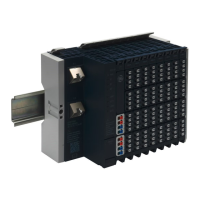GFK-2958E RSTi-EP User Manual 334
7.3 Electromagnetic Compatibility (EMC)
RDTi-EP products completely meet EMC requirements. EMC planning, however, is necessary prior to
installation.
Aspects to consider include all potential interference sources such as galvanic, inductive and
capacitive couplings, as well as radiation couplings.
7.3.1 Ensuring EMC
To ensure EMC, the following basic principles must be observed during installation of the RSTi-EP
modules:
• Proper, extensive earthing of inactive metal parts
• Correct shielding of cables and equipment
• Proper layout of wires – cabling
• Creation of a uniform reference potential and earthing of all electrical equipment
• Special EMC measures for special applications (e.g. frequency converters, servo drives)
• Contactors and relay coils must be equipped with the corresponding interference
suppressors
7.3.2 Earthing of Inactive Metal Parts
The earthing of all inactive metal parts reduces the influence of coupled interference. For this
purpose, all inactive metal parts (such as switch cabinets, cabinet doors, support beams, mounting
plates, DIN rails, etc.) must be connected to each other over a large surface area with low
impedance, whereby a uniform reference potential is ensured for all control unit elements.
Required measures:
• Removal of the insulating layer around screw connections. Protection of connection points
against corrosion
• Connection of moving earthed components (cabinet doors, separated mounting plates, etc.)
through short earthing straps with large surfaces
• When possible, avoid using aluminium parts, because aluminium oxidises easily and in this
respect is unsuited for earthing
7.3.3 PE connection
The connection from earth to the PE (protective earth) connection must be done centrally.

